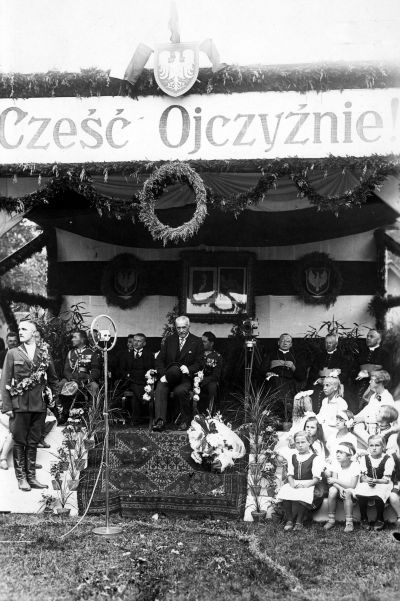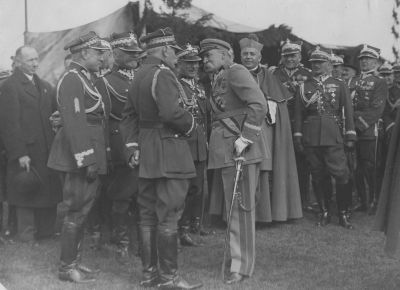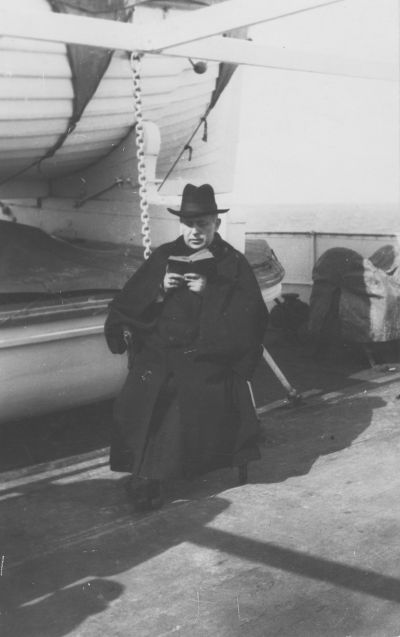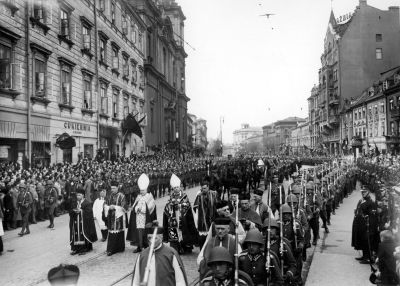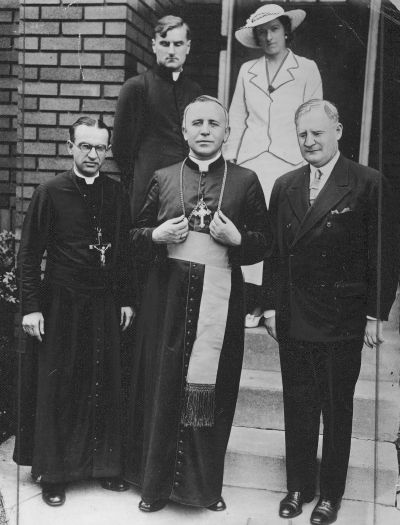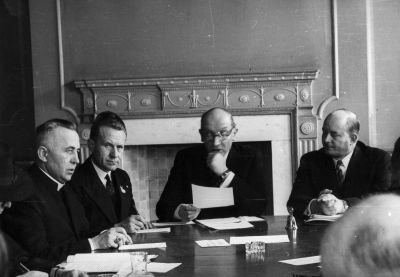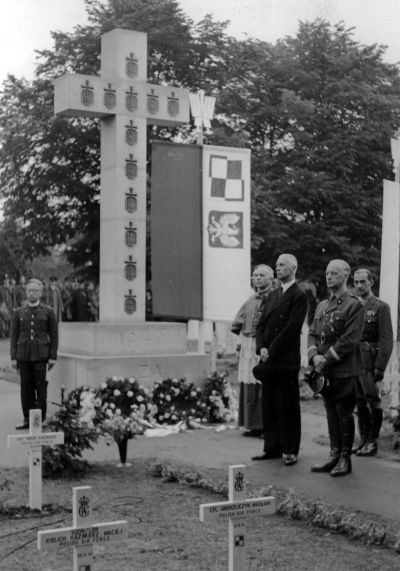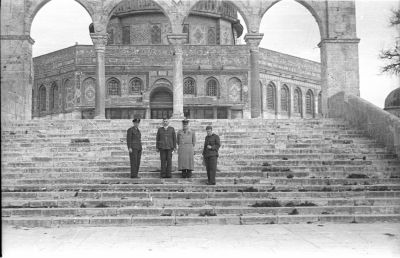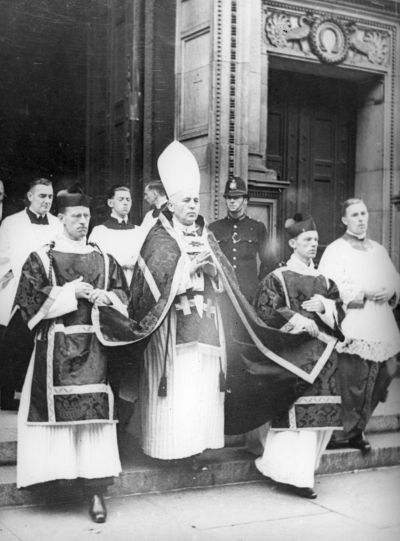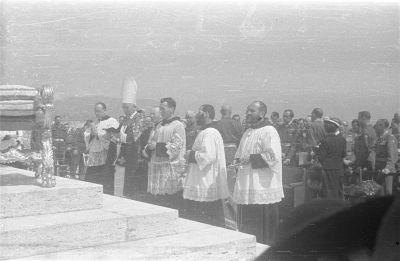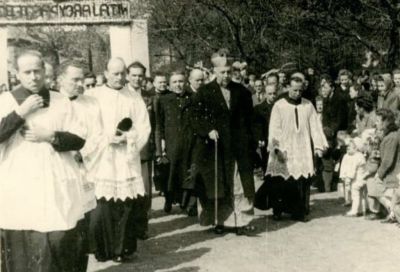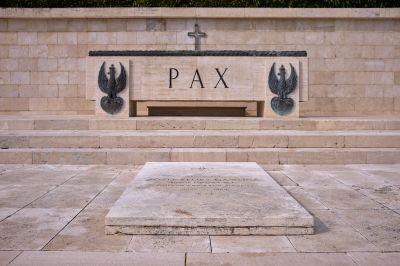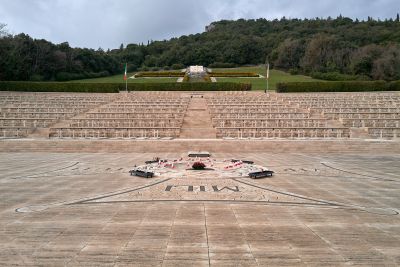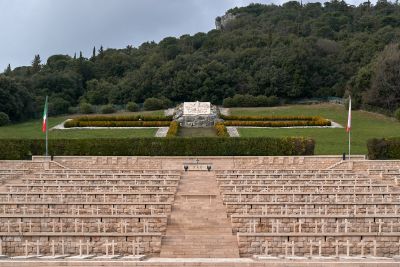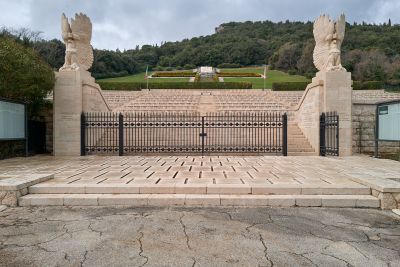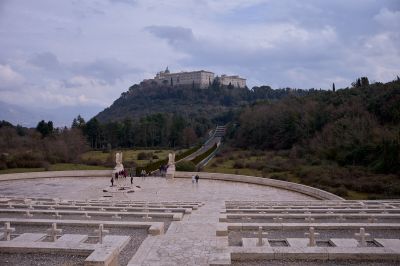Józef Feliks Gawlina (1892–1964). Legendary Polish pastor in Germany

Activities in Rome
During the years that followed, Gawlina travelled to the United States multiple times, where he gave lectures and persuaded others to help the DPs in Germany, as well as to make it easier for them to emigrate to the US, Canada and other countries. He encouraged the priests to remain in their posts and to remain independent when it came to exerting influence over repatriation or emigration. He lived in Rome, at the Polish church of San Stanislao alle Botthege Oscure. In 1949, after the death of Cardinal Hlond, Pope Pius XII appointed Gawlina as the Spiritual Protector of Poles in exile (Protector of the Polish Emigrés). He wrote a great deal, and made efforts to maintain contact with the Polish pastoral centres throughout the world. In relation to the pastoral missions, he endeavoured to ensure an appropriate jurisdiction and to secure options for regulating activities by the local church. In 1949, he also began publishing the magazine “Duszpasterz Polski poza granicami” (DPZG), which appeared regularly and which consisted of two parts: one comprising news and educational material, and the other containing helpful information for writing sermons. As part of the preparations among Polish emigrés for the millennium anniversary of the Baptism of Poland, he initiated the publication of the annual entitled “Sacrum Poloniae Millenium”. He maintained regular contact with the authorities in the Vatican. Since his worsening health prevented him from visiting his diocese in Germany regularly, the responsibility for the rights of jurisdiction and the representation of the ordinary before the civilian and church authorities was transferred to the vicar general.
On 29 November 1952, Gawlina was made titular archbishop of Madito. That same year, he joined the Supreme Emigration Council, of which he later became a member of the executive committee. In 1954, the Pope entrusted him with the office of Director of the World Association of Marian Congregations. In preparation for the Second Vatican Council, Pope John XXIII appointed Józef Gawlina as a member of the preparation committee for episcopal matters and the administration of the dioceses. Gawlina spent two years working intensively in this role, which cost him what was left of his strength and health. In his work, his foreign language skills and his understanding of the situation within the church on the different continents were great assets.
Death and burial
Józef Felix Gawlina died of heart failure in the early hours of 22 September 1964 in his apartment in Rome. He was first interred in the Campo Verano cemetery in Rome, in the vault of the Felician Sisters. On 28 September 1964, the Holy Mass for the deceased was held in the cathedral of the diocese of Katowice by Bishop Józef Kurpas. Gawlina was taken to his final resting place on 8 April 1965, in the Polish war cemetery in Monte Cassino. In his obituary of Gawlina, Bishop Władysław Rubin wrote: “He went through this world as a soldier, and fell at his post like a soldier. Verus Miles Christi – a true knight of Christ”.
Stanisław Budyn, September 2023
Sources:
Jerzy Myszor, Arcybiskup Józef Gawlina – Wspomnienia, Katowice 2004.
Zygmunt Kotowski, Biskup Polowy ks. Józef Gawlina, Bagdad-Londyn, London 1964.
Władysław Rubin, Niestrudzony Sługa Kościoła, Duszpasterz Polski poza granicami (DPZG), Rome 1965, no. 1, p. 10–16.
Józef Warszawski, Ś. P. Arcybiskup Józef F. Gawlina, DPZG, Rome 1965, no. 1, p. 17–21.
Stanisław Piekut, Biskup Polowy Józef Gawlina, DPZG, 1965, no. 1, p. 22–25.
Józef Bańka, Arcybiskup Józef Gawlina, DPZG, 1970, no. 3, p. 210–226 and no. 4, p. 302–315.
Stanisław Budyn, Ordynariat dla Polaków, in: Wczoraj i dziś duszpasterstwa polskojęzycznego w Niemczech, Hanover 2016, p. 25–43 and Początki Duszpasterstwa polskojęzycznego, p. 105–125.
A Film about Gawlina by Wojciech Wojnicz on Youtube (original version in Polish):
https://www.youtube.com/watch?v=b7j4a3f363s&t=72s

